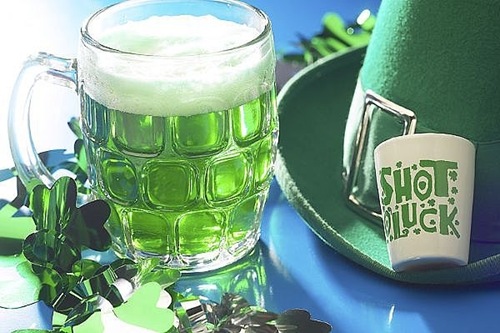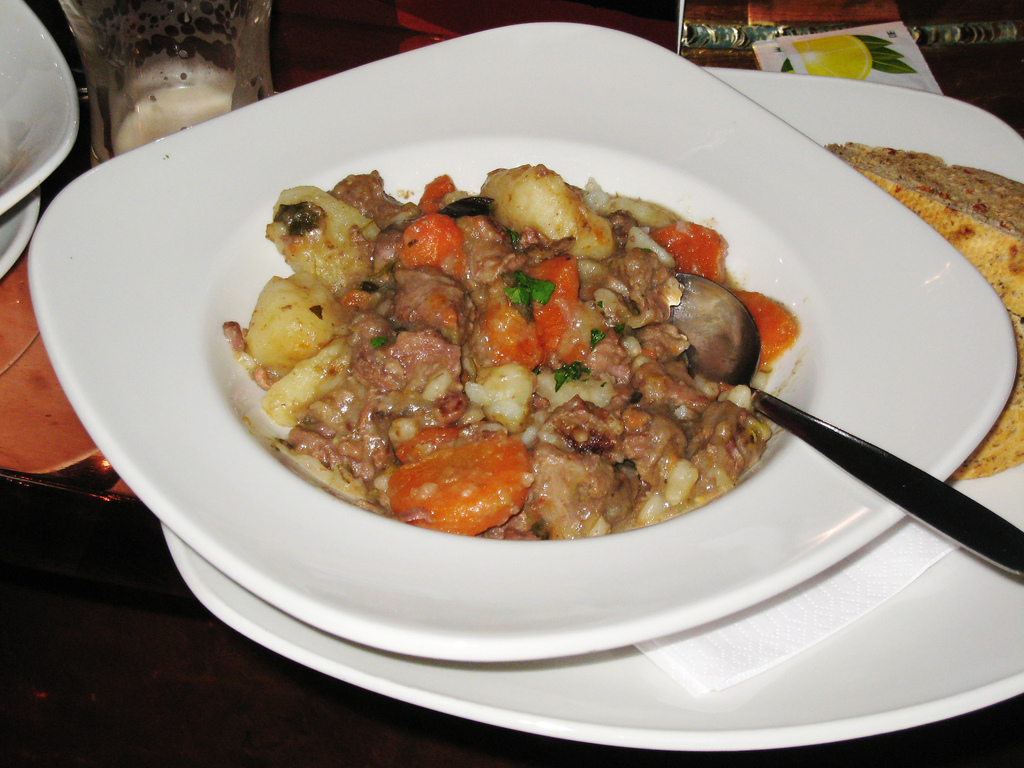Loving the BITE: St Patrick’s Day Special
Loving the BITE: Irish Stew with Ale
 I have been told that more than a few LTB readers are beer drinkers. And, although there’s often confusion regarding the health benefits and detriments of alcohol, I’ll be happy to set the record straight: moderate amounts, defined as 1-6 oz. glass of wine, 1-12 oz. glass of beer, or even 1 shot of hard liquor for women, and double the portions for men, are health promoting even when drank every day (but I usually recommend 2-3 times per week – I’ll explain below). This is not to say that they will help you reach an ideal weight or have a good influence on your other food choices. Simply put, the alcohol and other components of these drinks promote heart health and cellular health. So, sit back, set some stew on the stove, and drink a cold one…
I have been told that more than a few LTB readers are beer drinkers. And, although there’s often confusion regarding the health benefits and detriments of alcohol, I’ll be happy to set the record straight: moderate amounts, defined as 1-6 oz. glass of wine, 1-12 oz. glass of beer, or even 1 shot of hard liquor for women, and double the portions for men, are health promoting even when drank every day (but I usually recommend 2-3 times per week – I’ll explain below). This is not to say that they will help you reach an ideal weight or have a good influence on your other food choices. Simply put, the alcohol and other components of these drinks promote heart health and cellular health. So, sit back, set some stew on the stove, and drink a cold one…
Ingredients:
- 2 pounds organic, grass-fed beef brisket OR chicken (cubed)
- salt and black pepper to taste
- 2 tablespoons all-purpose flour
- 5 tablespoons olive oil
- 2 cups diced portobello mushroom caps
- 1 1/2 cups red pearl onions, peeled
- 1 cup diced carrot
- 1 cup diced celery root (celeriac)
- 1 cup diced turnip
- 2 cloves garlic, minced
- 2 (12 fluid ounce) cans or bottles brown lager beer
- 2 cups organic beef broth
- 1 cup diced potato
- 1 tablespoon malt vinegar
- 4 sprigs fresh thyme, chopped
- 2 sprigs fresh rosemary, chopped
Directions:
 Place the meat (cubed) into a mixing bowl, and season with salt and pepper. Sprinkle with flour, and toss until evenly coated. Heat the oil in a Dutch oven or large pot over medium heat. Cook the meat in small batches until browned on all sides; about 5 minutes per batch. Set the meat aside as the batches are done.
Place the meat (cubed) into a mixing bowl, and season with salt and pepper. Sprinkle with flour, and toss until evenly coated. Heat the oil in a Dutch oven or large pot over medium heat. Cook the meat in small batches until browned on all sides; about 5 minutes per batch. Set the meat aside as the batches are done.- Once the meat has been browned and set aside, stir in the portobello mushrooms, and cook until browned, about 5 minutes. Remove the mushrooms, and set aside. Stir the pearl onions, carrot, celery root, and turnips into the pot. Cook and stir until the onions begin to turn light brown, about 5 minutes. Add the garlic, and continue cooking until the onions are golden brown, about 3 minutes more. Remove the vegetables and set aside.
- Return the beef to the pot, and pour in the beer. Bring to a boil, and cook until the beer has reduced to 1/3 of its original volume, about 8 minutes. Pour in the beef broth and return to a boil. Reduce heat to medium-low, cover, and simmer until the meat starts to become tender, about 1 hour. Return the browned vegetables to the pot along with the potatoes, recover, and cook 1 hour more.
- Stir in the reserved mushrooms, malt vinegar, thyme, and rosemary. Simmer a few minutes until heated through. Season to taste with salt and pepper before serving.
Being St. Patty’s day, let’s forget the rest and discuss the benefits of dark beer.
First off, just like fruits and vegetables, the darker the better when it comes to antioxidant and flavanoid levels. Beers like Guinness rank high in antioxidant levels which help to promote cellular health by “quenching” nasty free radicals, and they inhibit deposits of cholesterol into our cell walls. The same is true of dark-colored wines (since I can’t stand beer, I had to put something in about wine – I know, there goes all my credibility).
Next, most all alcohol (the alcohol itself, not the entire sugar-loaded drink for any margarita fans) promotes increases in healthy high-density lipoprotein (HDL) cholesterol and decreased risk of stroke and heart disease. Why is HDL good for us? It is actually sent out by the liver to scavenge “bad” low-density lipoprotein (LDL) before it can be oxidized and enter our artery walls. Between an increase in HDL and antioxidants, dark beer fights plague build-up in arteries. Of note, the alcohol content is greatly reduced when cooked in a recipe such as our Recipe of the Week, so go ahead and have a few gulps from the bottle while you make it!
It can also oppose high insulin levels in the body. Remember, insulin production, which is usually caused by increases in blood sugar, promotes harmful fat accumulation and insulin resistance. Moderate alcohol intake reduces insulin resistance (the more insulin resistance, the more insulin pumped out into the blood stream, the more fat accumulation and harm). And, although it contains some carbs, fermented carbs are metabolized differently and a don’t usually cause high blood sugars.
On the other hand, as the Irish say, there are two sides to every story and at least twelve versions of every song.
There are good reasons to 1) not become “dependant” on alcohol (even dependency on just 1-2 drinks after work to unwind) and to 2) not binge.
First, avoid the binge to avoid the bulge: Although moderate alcohol intake has positive effects, binge drinking swings the pendulum far too far the other way. With binge drinking, high levels of calories are consumed through alcohol and food since alcohol often leads to overeating. Then, ghrelin levels are increased, which stimulates hunger, and fat breakdown is decreased, likely because the liver is dealing with alcohol overload. Lastly, alcohol is associated with sleep disturbances, which further negatively impact metabolism hormones. If the binge is a big one, the alcohol impact on the liver can hinder it from processing and burning fat for even up to 3 days, so you can’t just burn off the extra bulge in the days that follow. Binge drinking is a quadruple whammy to your metabolism, so keep it moderate!
And lastly, chronic drinking can cause our bodies to run on elevated levels of cortisol, the stress hormone. Unfortunately, elevated cortisol levels encourage insulin resistance and fat accumulation. What’s more, chronic drinking can lead to a chronically increased blood pressure level. Bummer.
All in all, beer and other non-sugary alcohol, in moderate amounts a few times per week, is great…even recommended for most people by this dietitian.
May the road rise up to meet you (every ride!), and may your glass be ever full (a few times per week).
Fuel the Ride. Nourish the Body.



It means that you get total discounts at the time of subscription. They offer so many
extras that make starting up a new website so simple
that even a complete novice could get a website up
and running. These methods are extremely efficient, saving companies and employees time and money.
I salute you with a Corona for this one!